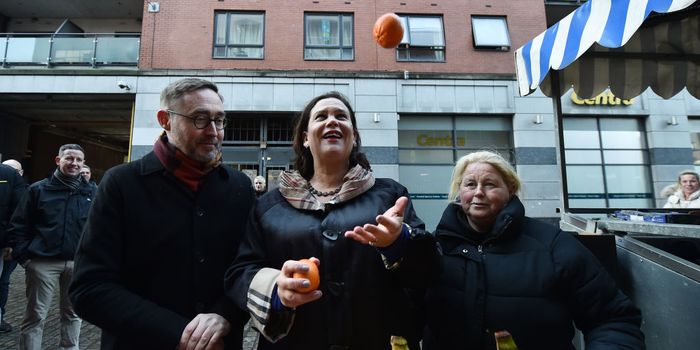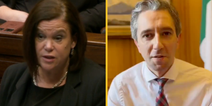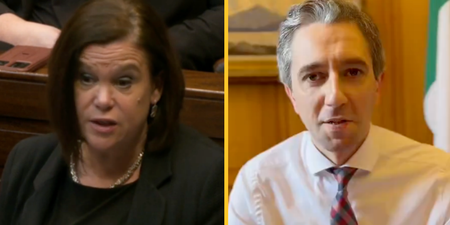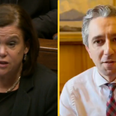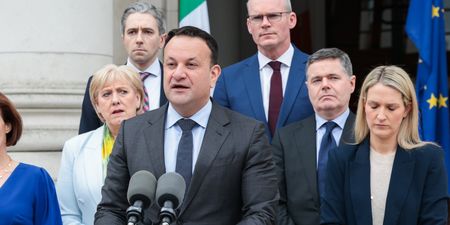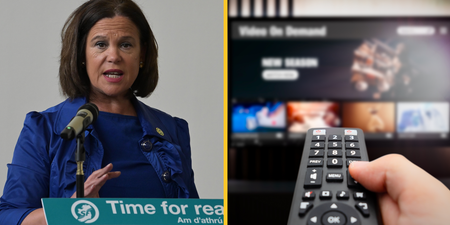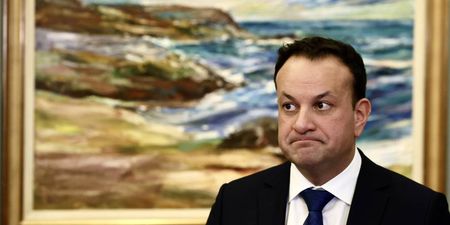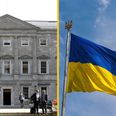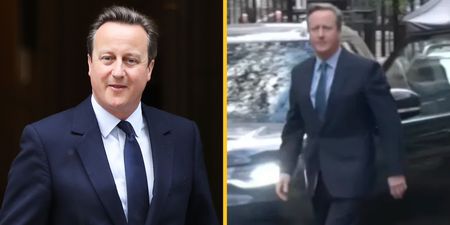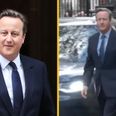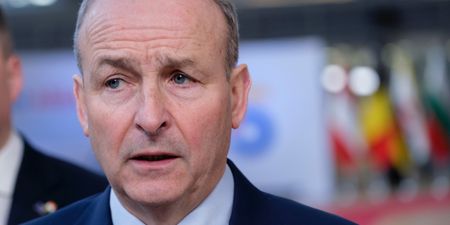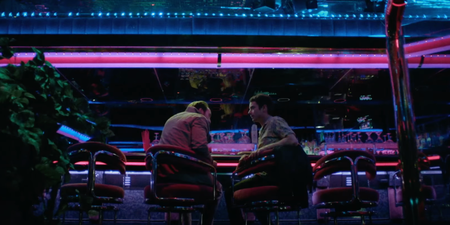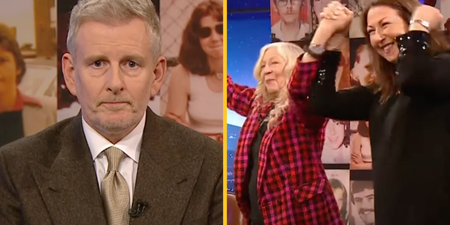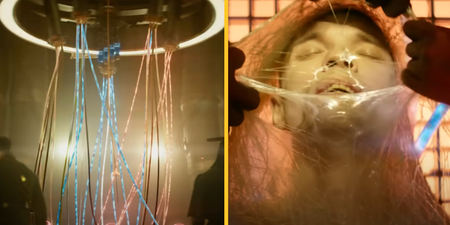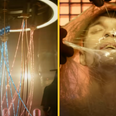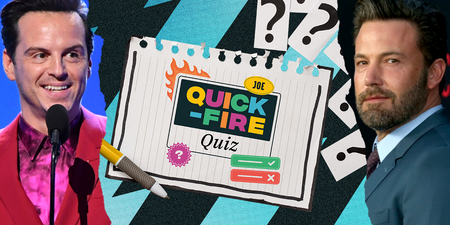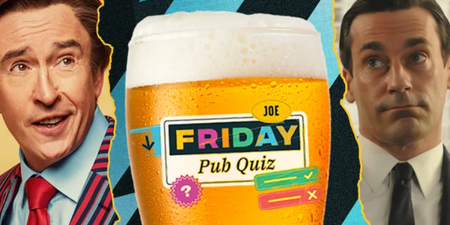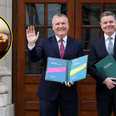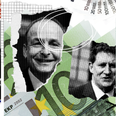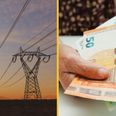Since winning independence, Ireland has been governed at all times by two parties who don’t differ on anything important.
Two parties who only snipe at each other based on their past mistakes rather than any actual, foundational dispute over how best to govern a country.
Two parties who talk at length about how the other has left the country in ruins at one time or another and can’t be trusted not to do so again, only to prop one another up when a threat to their political duopoly arises.
Two parties who may well be about to go into government again.
The seismic shock that was talked about over election weekend now looks more like a rumble before the quake. The kind of thing that only dogs and dolphins can perceive with total clarity. The shake is yet to actually happen, despite lots of harbingering.
There has been nonsensical international (and domestic) coverage that has compared Mary Lou McDonald to Donald Trump, for example. Elsewhere, Sinn Féin have been painted as radical and Corbynist and populist, though it’s their historic ties to IRA violence that’s radical rather than their politics, which are a pretty boring, bog standard of moderate-leftism that can be found governing many European countries.
They believe in abolishing certain taxes, such as the USC and the property tax. There is nothing Marxist about that. They are not particularly pro-immigration, and believe that Ireland should only be taking in immigrants in order to fulfil our labour needs. They’ve been lambasted on the climate side of their manifesto. Maybe most tellingly, they were prepared to go into government with Fianna Fáil and Fine Gael.
On housing, they are proposing rent-freezes and a major social housing programme. It’s left-wing, to be sure, but it’s not a jot less than Ireland needs as it remains mired in a housing crisis that is crippling society.
Indeed, Sinn Féin’s leftism shines brightest on matters of foreign affairs, where they support movements like the one that spawned them. Things like Scottish and Catalan independence, Free Palestine, and a general atmosphere of anti-imperialism.
But they are radical in the sense that they are neither Fianna Fáil, nor Fine Gael – thereby meeting two key demands of the Irish public.
Speaking on Friday, McDonald said that it was “disgraceful that the old boys’ club of Fianna Fáil and Fine Gael can set aside the democratic mandate” provided by the people.
But 24% of first preference votes isn’t a mandate. It’s less than a quarter of the electorate. Sinn Féin also don’t actually have anybody else to blame for only running 42 candidates. It hammers home the unexpected nature of their performance.
If they knew they had this mandate from the public, then they would have run more. They didn’t run more because they didn’t know the appetite for change would benefit them so directly.
This thinking was rooted in the results of the 2019 elections just seven months ago, where Sinn Féin lost 79 seats on city and county councils and two seats in the European Parliament. The Twitter commentariat might try to argue that anyone could have seen this coming, but this only happened because Leo Varadkar and Micheál Martin pushed the public into Sinn Féin’s arms.
The SF surge was less to do with the charisma of their leadership, less to do with republican sentiment, less to do with any one unique policy position, than it was to do with Varadkar and Martin painting Sinn Féin as their polar opposite. The Anti-Fianna Fáil, Anti-Fine Gael Party. “If you don’t want us, then go and vote for them.” And people did. Thanks very much for the directions.
Not only did they pick up the highest percentage of the popular vote, the establishment parties only picked up 43% of the vote between them. A pathetic showing for parties that used to exchange seat totals above 70 on a regular basis.
So Sinn Féin did well. Very well. They did as well as could have possibly been imagined. They still didn’t do well enough.
When nobody gets more than 24% of the first preference votes, mandates are open to interpretation. The only real one seems to be this: people want a change.
So what happens now?
Some have bandied about the theory that Sinn Féin would relish the five years in opposition, seeing it as five years to spend doing push-ups in the hallway before they’re given an opportunity to stuff Fine Gael and Fianna Fáil into their respective lockers. This is wrongheaded.
It is impossible to predict what state the world will be in five years from now. We don’t know just how many of our beaches will have been swallowed by rising sea levels. We don’t know if other countries may stage their own exit from the European Union. We don’t know whether Donald Trump is getting four more years, and all the existential anxiety that comes with that particular question mark.
Sinn Féin know this, and they don’t care to wait and see. Who would? This is precisely why they were prepared to talk to FF/FG about governing.
There is no hope either for a left-coalition. The numbers add up to about 65 seats, at best, and even that would be one of the messiest coalitions in history – shoehorning in PBP, Greens, Soc Dems, Sinn Féin and a mish-mash of independents into one programme, and then hoping for abstentions from parties who all operate a whip system.
A second election in the near future represents Sinn Féin’s best chance at consolidating their new status. Plenty of constituencies would almost certainly return two Sinn Féin candidates in the current climate.
The Anyone But Fine Gael or Fianna Fáil (I’m working on a better name, I promise) bloc has never made themselves heard like this. Both traditional parties reduced to less than 40 seats, scrapping with Sinn Féin on equal terms and finally forced to justify themselves as a force in Irish society. A surge for the Greens, a surge for the Soc Dems, and a hold steady for Labour and PBP.
FF/FG’s century-old grip on power in Ireland has never been this limp.
And yet, they still hold some cards. Their weakness laid bare, they can still cling on to power. Their best chance at self-preservation is now to come together and force a coalition to keep Sinn Féin at bay for as long as possible, and hope that the public doesn’t punish them for it any more than they already have. A big ask.
It wasn’t enough this time, but Sinn Féin and the rest of the bloc will be relishing what comes next.
LISTEN: You Must Be Jokin’ with Conor Sketches | Tiger Woods loves Ger Loughnane and cosplaying as Charles LeClerc
